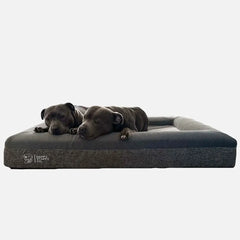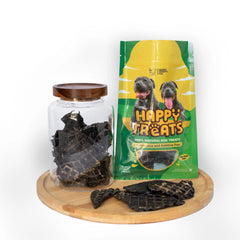
We’ve all been there—one moment, you’re reaching to pick up your dog’s favourite chew, and the next, they’re growling or even snapping. It can feel alarming and confusing, especially when your pup is normally such a sweetheart. But here’s the thing: resource guarding is a natural behaviour rooted in fear, instinct, and uncertainty. Dogs aren’t being mean; they’re trying to protect something they value, often because they’re unsure if they’ll get it back. The goal isn’t to punish this behaviour—it’s to understand it and work through it in a way that builds trust, not fear.
To stop resource guarding without escalating the problem, you need to create a safe environment, use positive reinforcement, and gradually teach your dog that sharing leads to rewards, not loss. In this article, we’ll break down exactly what resource guarding is, how to recognise it early, what mistakes to avoid, and how to help your dog feel safe enough to let go—literally and emotionally.
What Is Resource Guarding in Dogs?

Resource guarding is when a dog becomes possessive over things they consider valuable—this could be food, toys, treats, a specific person, or even a cosy spot on the couch. They may act aggressively or anxiously to keep others away from what they’re guarding.
Common signs include:
-
Growling or snarling
-
Freezing or stiffening when approached
-
Lunging or snapping
-
Blocking access to the item with their body
-
Biting in severe cases
It’s important to note that not all guarding is malicious. Sometimes dogs are just unsure or haven’t been taught it’s safe to share. And while it’s common in many breeds, strong and loyal types like Staffies can be particularly prone simply due to their deep bond with their humans.
Is My Dog Resource Guarding? How to Tell the Signs Early
The earlier you notice signs of guarding, the better your chances of managing it smoothly. Behaviours can range from subtle to severe:
Mild: Hovering, Watching Closely, Tensing
-
Your dog becomes rigid or watches you intently when you approach their food or toy.
-
They may move slightly to block your hand but won’t growl.
-
Sometimes they hover nearby with tense body language, anticipating a potential threat.
Moderate: Growling, Freezing, Snapping
-
Audible growls when someone gets too close to a valued item.
-
They may freeze and stare with dilated pupils, warning others to back off.
-
Snapping occurs when their signals are ignored or they feel cornered.
Severe: Biting, Attacking When Approached
-
Immediate lunging or biting when someone nears the guarded object.
-
Their posture may become aggressive—ears back, teeth exposed, body low and forward.
-
This often happens when earlier warning signs were missed or punished.
To track patterns, keep a simple log: what item was guarded, who was involved, and what the outcome was. Videos can help professionals assess the situation if you later seek help.
What NOT to Do: Common Mistakes That Make It Worse
We get it—seeing your dog growl at you is upsetting. But reacting emotionally or forcefully can make things worse. Here’s what to avoid:
Punishing the Growl or Bite
This removes a crucial warning signal, not the underlying fear or discomfort your dog is feeling. Without the growl, your dog may go straight to biting without any warning. Respecting early cues builds trust and safety for both of you.
Trying to Dominate or Forcefully Take Items
Using physical control or intimidation breaks the bond you’ve built with your dog. These tactics often create more fear, making guarding worse in the long run. Dogs need to feel safe, not threatened.
Yelling, Grabbing, or Confronting
Loud or sudden reactions can trigger a fear response and cause your dog to escalate. Instead of learning to relax, they’ll feel the need to defend themselves more. Calm, clear communication always works better.
Ignoring Subtle Signals
Dogs give us plenty of hints before things get serious—tight lips, averted gaze, low growls. By ignoring these, you miss valuable chances to intervene early. Learning your dog’s body language is one of your most powerful tools.
Inconsistent Handling
Mixed signals confuse your dog and make them unsure of what to expect. One day you let them keep a toy, the next you snatch it—this inconsistency creates anxiety. Everyone in the home should respond to guarding the same way for best results.
How to Stop Resource Guarding in Dogs Without Escalating the Problem
Step 1: Set Up a Safe Environment
-
Remove access to high-value triggers while you’re working on training.
-
Feed in a separate, calm space away from foot traffic.
-
Use baby gates or playpens to give your dog space when needed.
Step 2: Learn Your Dog’s Triggers and Thresholds
-
Observe what they guard: food, toys, beds, people?
-
Note how close someone can get before your dog starts guarding.
-
Keep a daily journal or use your phone camera to spot patterns.
Step 3: Start with Trust-Building Exercises
-
Hand-feed meals to associate you with positive experiences.
-
Sit at a comfortable distance and gradually move closer during mealtimes.
-
Let your dog approach you on their terms—no rushing.
Step 4: Teach a Positive “Trade” or “Drop It” Cue
-
Use high-value treats (chicken, cheese) to make trades worthwhile.
-
Say “Drop it” once as you offer the treat.
-
Practice first with low-stakes items before working up to favourites.
Step 5: Use Desensitisation and Counter-Conditioning
-
Slowly approach while your dog has a mildly valuable item.
-
Toss treats as you approach to build positive associations.
-
If your dog tenses, take a step back—respect the threshold.
Step 6: Reward Calm, Relaxed Behaviour Around Resources
-
Praise and treat when your dog shows relaxed body language near guarded items.
-
Introduce calming tools like enrichment toys and puzzle feeders.
Step 7: Practice Impulse Control Training
-
Teach commands like “Wait,” “Place,” or “Leave it.”
-
Play control-based games like “It’s Your Choice” to build focus.
-
Use mats or designated areas to redirect guarding energy.
Step 8: Involve the Whole Household
-
Make sure everyone responds consistently to guarding signs.
-
Educate kids on respecting your dog’s space and signals.
-
Use calm, predictable routines to help your dog feel secure.
When to Seek Help: Professional Training and Behaviour Support
Sometimes, resource guarding reaches a level where you need expert guidance. It’s not a failure—it’s the smart thing to do.
Seek Help if Your Dog Bites or Escalates Quickly
Biting or aggressive behaviour that escalates without much warning is a strong indicator that you need professional support. This isn’t about failing as a pet parent—it’s about taking smart steps to keep everyone safe. Early intervention often makes training easier and more effective.
Choose the Right Professional: Trainer vs Behaviourist
Dog trainers typically focus on obedience and reward-based systems, while behaviourists are trained to diagnose underlying emotional or psychological issues. Depending on your dog’s severity, you may benefit from one or both. Look for someone who uses positive reinforcement methods and has experience with guarding.
Expect a Tailored Behaviour Modification Plan
A solid training plan should involve an initial assessment followed by structured desensitisation, exposure exercises, and clear progress benchmarks. It’s important that the plan is realistic and aligns with your household routine. You’ll likely need to work in stages and celebrate small wins.
Ask the Right Questions Before You Commit
Not all professionals are equipped to handle resource guarding. Ask whether they’ve dealt with similar cases and what their approach is. Avoid anyone who recommends dominance, punishment, or outdated “alpha” theories—they’ll do more harm than good.
Best Tools & Products to Help Manage Resource Guarding

We’ve seen how the right tools can turn training from stressful to seamless:
Puzzle Feeders and Slow Bowls
These tools are fantastic for slowing down fast eaters and reducing anxiety around meals. They also build your dog’s patience, which is key in managing guarding behaviour. Over time, they can help your dog associate mealtimes with calm focus rather than stress.
High-Reward Treats
Training becomes much more effective when your dog is truly motivated. Using premium, tasty treats can shift your dog’s mindset from guarding to engaging. These rewards are especially helpful when teaching “drop it” or “leave it.”
Crates, Baby Gates, and Leashes
These tools are perfect for setting up a controlled and peaceful environment. They allow you to manage space without conflict, giving your dog room to decompress. Gentle boundaries like these can prevent guarding episodes before they start.
Enrichment Toys
Chew toys, lick mats, and puzzle games satisfy your dog’s natural needs in a positive way. They reduce boredom, which often fuels anxiety and guarding. Best of all, they teach your dog to enjoy having something valuable without feeling threatened.
You Can Fix This—With Patience, Kindness, and a Plan
We know how overwhelming it can be when your sweet dog suddenly shows guarding behaviour. But you’re not alone—and you’re not stuck. With patience, understanding, and consistent training, your dog can learn to feel safe and let go of the need to protect. At Happy Staffy Co., we’ve seen so many dogs make incredible progress with the right approach. It’s not about control—it’s about connection. If you're working through this right now, we're here cheering you on every step of the way.





